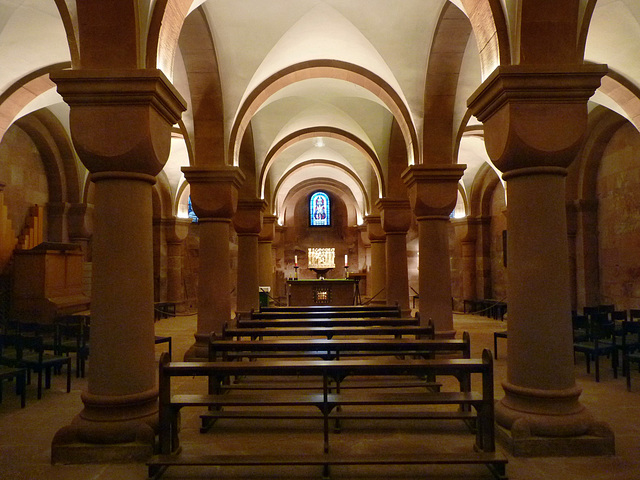Aachen - Cathedral
Aachen - Cathedral
Aachen - Cathedral
Aachen - Cathedral
Aachen - Cathedral
Aachen - Cathedral
Gandersheim - Abbey
Gandersheim - Abbey
Gandersheim - Abbey
Gandersheim - Abbey
Gandersheim - Abbey
Goslar - St. Jakobi
Goslar - St. Cosmas and Damian
Goslar - St. Cosmas and Damian
Goslar - St. Cosmas and Damian
Goslar - Cathedral
Muenster - Cathedral
Muenster - Ueberwasserkirche
Freckenhorst - St. Bonifatius
Freckenhorst - St. Bonifatius
Freckenhorst - St. Bonifatius
Freckenhorst - St. Bonifatius
Freckenhorst - St. Bonifatius
Mainz - Cathedral
Mainz - Cathedral
Mainz - Cathedral
Mainz - Cathedral
Mainz - Cathedral
Worms - Cathedral
Worms - Cathedral
Worms - Cathedral
Worms - Cathedral
Worms - Cathedral
Worms - Cathedral
Worms - Cathedral
Worms - Cathedral
Worms - Cathedral
Worms - Cathedral
Worms - Cathedral
Worms - Cathedral
Worms - Cathedral
Speyer - Cathedral
Speyer - Cathedral
Speyer - Cathedral
Speyer - Cathedral
Location
See also...
Keywords
Authorizations, license
-
Visible by: Everyone -
All rights reserved
-
150 visits
Mainz - Cathedral


The St. Martin's Cathedral, a predominantly romanesque structure, with many gothic and some baroque extensions, is in the very center of the city of Mainz.
Archbishop Willigis of Mainz, an important political player, had the construction of a cathedral started end of the 10th century. This basilica was (already!) completed 1009. A day before consecration in August 1009, the new cathedral was illuminated by torches - and burnt down completely. So finally 1036 Archbishop Bardo completed the church and it got consecrated in the presence of Conrad II.
Another fire in 1081 damaged the cathedral. With the support of Henry IV the reconstruction started around 1100. For the next years "magistri comacin", highly specialised stone masons from the Lombardy left their marks here.
In 1184 Frederick I Barbarossa hold one of the biggest parties of medieval times here, for the accolade of his sons, a ceremony that took place inside the cathedral.
During the Thirty Years' War swedish troops looted the cathedral, so some parts of the former treasury are now in amuseum in Uppsala.
The "Republic of Mainz", a product of the French Revolution, was the first democratic state on German territory. The state was represented in Paris by Georg Forster, who, as a boy, had been in the Pacific with Captain Cook. During the time of the republic the cathedral was used as a piggery, later a military hospital. All furniture was either sold or used for heating up the building. The time of the republic ended, when Prussia cannonaded Mainz, what damaged the cathedral severely.
.
This large crypt, below the eastern choir, was planned already, when the eastern choir was constructed (1100/1005), but the construction stopped over centuries. It did not get finished due to the flooding from the river Rhine, which is only about 400 meters away. The reconstruction of the 19th century finally finished the work. The crypt ("Bonifatius Chapel") holds a modern shrine (seen below the blue window) containing relics of 22 saints, connected to Mainz.
The crypt under the western choir is from 1926. It is used since then as burial place for the archbishops of Mainz.
Archbishop Willigis of Mainz, an important political player, had the construction of a cathedral started end of the 10th century. This basilica was (already!) completed 1009. A day before consecration in August 1009, the new cathedral was illuminated by torches - and burnt down completely. So finally 1036 Archbishop Bardo completed the church and it got consecrated in the presence of Conrad II.
Another fire in 1081 damaged the cathedral. With the support of Henry IV the reconstruction started around 1100. For the next years "magistri comacin", highly specialised stone masons from the Lombardy left their marks here.
In 1184 Frederick I Barbarossa hold one of the biggest parties of medieval times here, for the accolade of his sons, a ceremony that took place inside the cathedral.
During the Thirty Years' War swedish troops looted the cathedral, so some parts of the former treasury are now in amuseum in Uppsala.
The "Republic of Mainz", a product of the French Revolution, was the first democratic state on German territory. The state was represented in Paris by Georg Forster, who, as a boy, had been in the Pacific with Captain Cook. During the time of the republic the cathedral was used as a piggery, later a military hospital. All furniture was either sold or used for heating up the building. The time of the republic ended, when Prussia cannonaded Mainz, what damaged the cathedral severely.
.
This large crypt, below the eastern choir, was planned already, when the eastern choir was constructed (1100/1005), but the construction stopped over centuries. It did not get finished due to the flooding from the river Rhine, which is only about 400 meters away. The reconstruction of the 19th century finally finished the work. The crypt ("Bonifatius Chapel") holds a modern shrine (seen below the blue window) containing relics of 22 saints, connected to Mainz.
The crypt under the western choir is from 1926. It is used since then as burial place for the archbishops of Mainz.
- Keyboard shortcuts:
Jump to top
RSS feed- Latest comments - Subscribe to the comment feeds of this photo
- ipernity © 2007-2024
- Help & Contact
|
Club news
|
About ipernity
|
History |
ipernity Club & Prices |
Guide of good conduct
Donate | Group guidelines | Privacy policy | Terms of use | Statutes | In memoria -
Facebook
Twitter

Sign-in to write a comment.